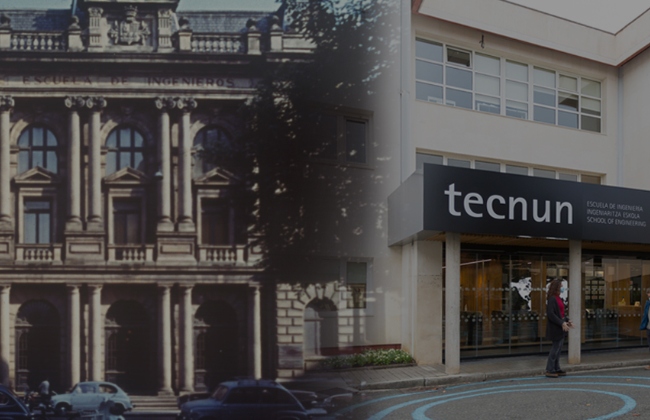La Universidad de Navarra nació en 1952, promovida por san Josemaría Escrivá, fundador del Opus Dei. Desde entonces, son muchos los hitos que han marcado su historia, marcada por la búsqueda de la excelencia en la docencia y la investigación, siempre al servicio de las personas y la sociedad.
-
1952
Nace el Estudio General de Navarra
La Universidad de Navarra, fundada por san Josemaría Escrivá, nace como Estudio General de Navarra en abril de 1952 con el objetivo de dar los primeros pasos en la creación de una Escuela de Derecho en Pamplona. El 17 de octubre, con un acto académico celebrado en el Salón del Consejo Foral de Navarra, en la Diputación.
El primer curso de Derecho se inicia en la Cámara de Comptos con 48 alumnos y 8 profesores.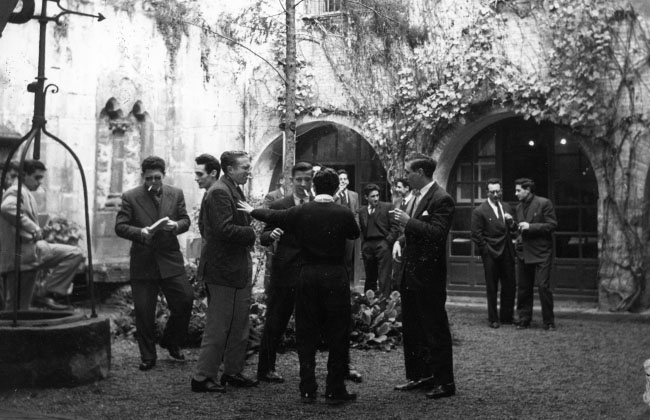
-
1954
Ismael Sánchez Bella, nuevo rector. Nacen las Escuelas de Medicina y Enfermería
Ismael Sánchez Bella es nombrado rector del Estudio General de Navarra el 7 de octubre.Catedrático de Historia del Derecho, llegó a la Universidad de Navarra en 1952, convirtiéndose en uno de los primeros profesores del centro académico. Fue el primer director de la Facultad de Derecho hasta su nombramiento como rector del Estudio General.
Además, ese mismo año se crean las Escuelas de Medicina y Enfermería, futuras Facultades.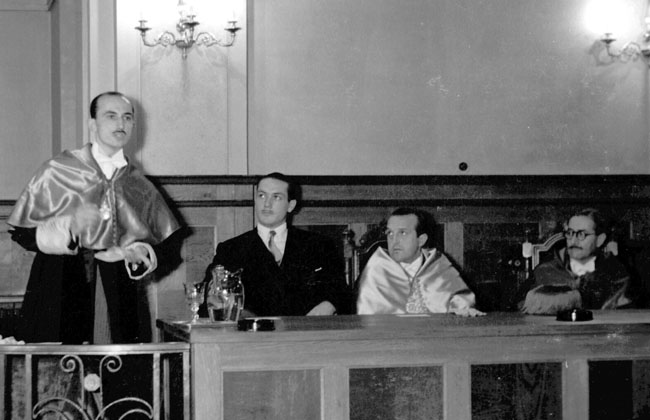
-
1955
Se crea la Facultad de Filosofía y Letras
Nace la Facultad de Filosofía y Letras, en la última planta del Museo de Navarra, en unas aulas cedidas por la Diputación Foral. Los alumnos de Medicina, en segundo curso, estudian asignaturas que exigen prácticas, instalaciones y laboratorios, así que se trasladan a un pequeño edificio del Hospital de Navarra y al laboratorio de Sanidad, cedido por la Diputación. Las alumnas de Enfermería hicieron sus prácticas en el Hospital General de Navarra.
En el curso 1955/56, el número de alumnos matriculados asciende a 184.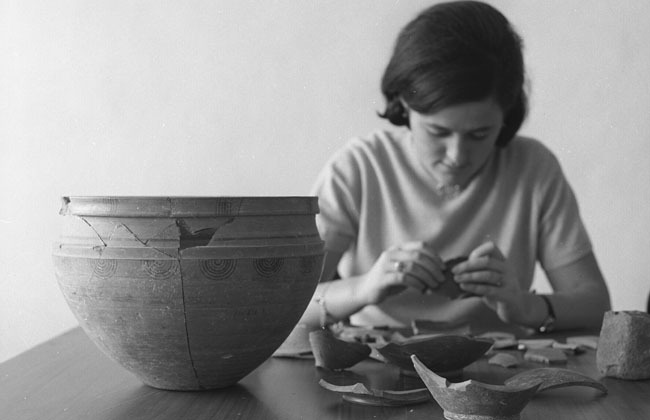
-
1958
Primer programa del IESE y creación del Instituto de Periodismo
El 25 de noviembre se inaugura el primer programa del IESE en Barcelona, con 20 directivos de empresas inscritos.
Las escuelas de dirección no eran muy conocidas fuera de Estados Unidos. Por eso, el establecimiento de esos programas constituye un hito en la historia de la educación de ejecutivos en España.
Este mismo año comienza su actividad el Instituto de Periodismo.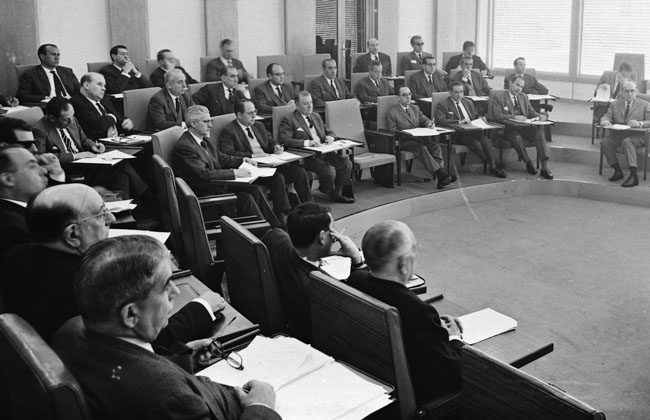
-
1959
Nacimiento de la Asociación de Amigos
Nace la Asociación de Amigos de la Universidad, con el fin de colaborar con el sostenimiento del centro académico.
Desde su constitución, las aportaciones de los Amigos de la Universidad han permitido la dotación de infraestructuras para docencia e investigación, la promoción de la Clínica Universidad de Navarra y, desde 1975, la concesión de becas para investigadores.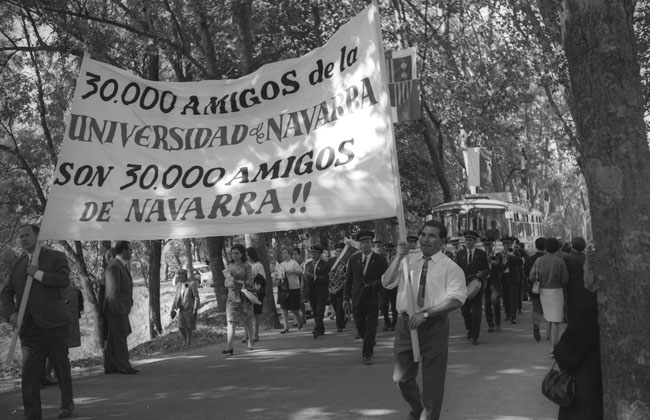
-
1960
Erección como Universidad y nombramiento de José Mª Albareda como rector
José Mª Albareda, catedrático de la Universidad de Madrid, toma posesión de su cargo como rector el 2 de febrero.
El 6 de agosto, la Santa Sede erige como Universidad al Estudio General de Navarra; y un Decreto de la Congregación de Seminarios y Universidades nombra Gran Canciller a su fundador, Josemaría Escrivá, quien el 25 de octubre recibe el título de Hijo Adoptivo de Pamplona.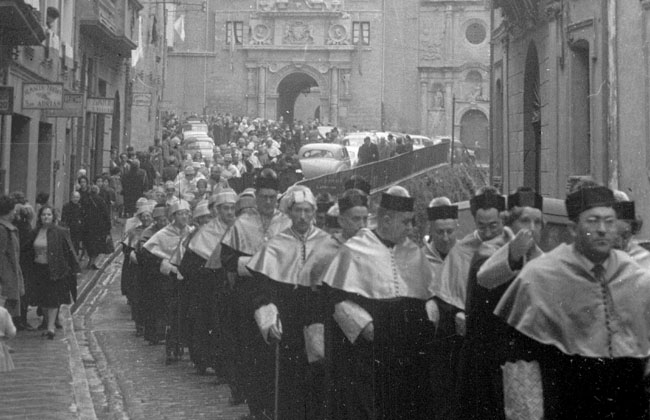
-
1961
Nace el Instituto de Idiomas y la Escuela Superior de Ingenieros Industriales
Comienza su andadura el Instituto de Idiomas, que imparte sus clases de inglés, francés y alemán en el Museo de Navarra. El número de alumnos asciende a 300. Thomas Gilgut, licenciado por la Universidad de Harvard, es elegido coordinador del cuerpo docente.Estuvo al frente del Instituto hasta 1968.
Comienza la Escuela Superior de Ingenieros Industriales, en San Sebastián, en un edificio cedido por la Diputación de Guipúzcoa.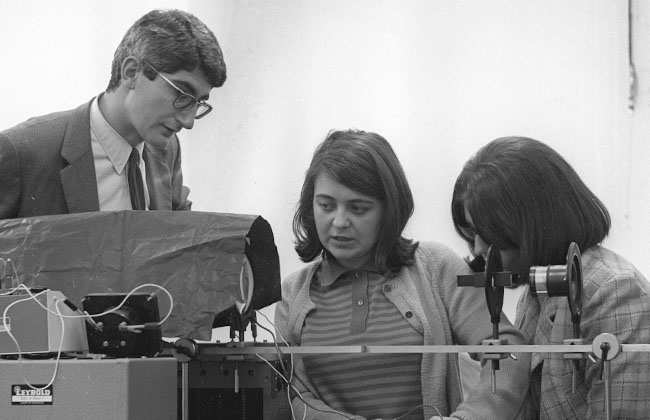
-
1962
Reconocimiento civil y primera fase de la Clínica
El Estado reconoce efectos civiles a los estudios realizados en la Universidad, equiparándolos plenamente a los de los centros estatales. Es la primera vez que los estudios de una institución no estatal son reconocidos de este modo.
El Cardenal Ottaviani, entonces Prefecto de la Sagrada Congregación del Santo Oficio, inaugura la primera fase de la Escuela de Postgraduados, primer proyecto de Clínica Universitaria. Se pone en marcha con 19 camas.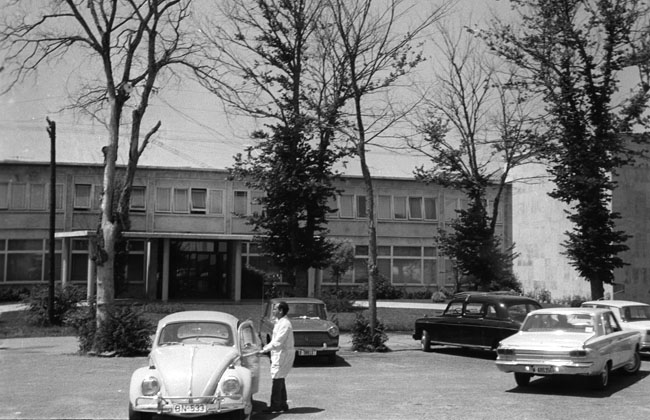
-
1963
Instituto Superior de Secretariado (ISSA)
Nace el Instituto Superior de Secretariado (ISSA), hoy denominado ISSA - School of Applied Management.
En 1963, la Universidad de Navarra compró el palacete Eva Enea (Villa Eva), situado entre las cuestas de Aldapeta y San Roque de San Sebastián, para albergar el Instituto Superior de Secretariado. Durante estos cincuenta años han pasado por sus aulas más de 3.000 alumnos.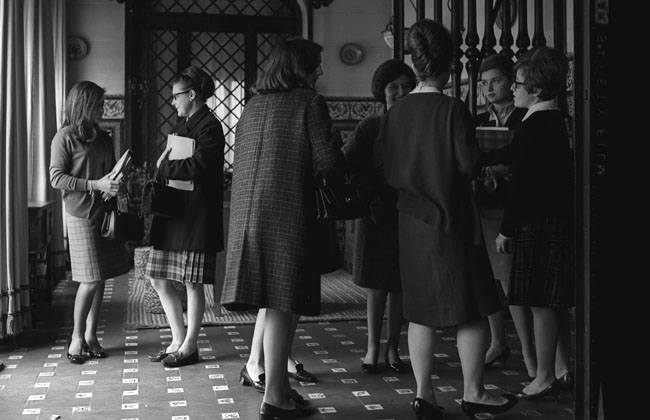
-
1964
Primera Asamblea General de Amigos y primeros Doctores Honoris Causa
El IESE lanza su programa MBA, bajo la guía de un Comité Asesor establecido por Harvard Business School y el IESE. Fue el primer MBA de dos años en Europa.
En septiembre de este año comienzan los estudios de las Facultades de Ciencias (Biología), Farmacia, la Escuela Técnica Superior de Arquitectura y se inicia la especialidad en Filosofía en la Facultad de Filosofía y Letras.
El sábado 28 de octubre, el Gran Canciller otorga por primera vez el grado de Doctor Honoris Causa, a Miguel Sancho Izquierdo y Juan Cabrera y Felipe.
El 30 de noviembre, la Asociación de Amigos celebra su Primera Asamblea General en Pamplona.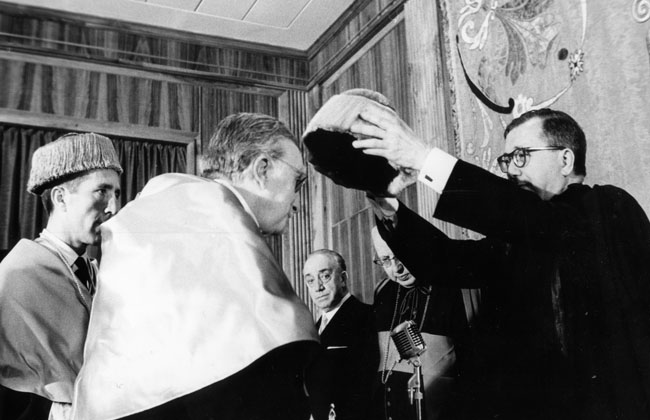
-
1966
Francisco Ponz , rector
Francisco Ponz Piedrafita, catedrático de Organografía y Fisiología Animal de la Facultad de Ciencias de la Universidad de Barcelona, toma posesión como rector
Se pone en marcha el Instituto de Lengua y Cultura Españolas (ILCE), y se termina la construcción de la Biblioteca de Humanidades.
En la festividad de la Inmaculada, y con la advocación de ‘Madre del Amor Hermoso', se coloca en la Ermita la imagen de la Virgen.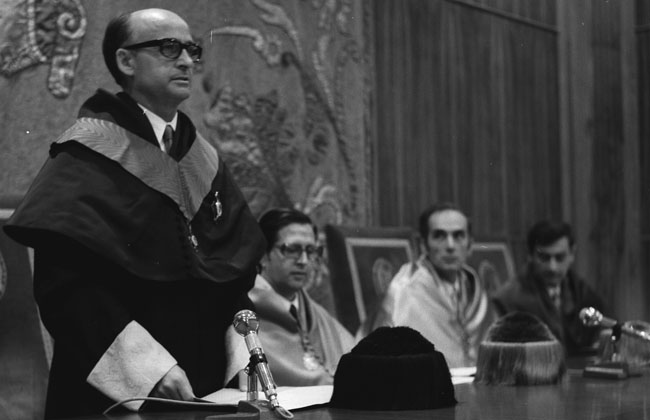
-
1967
Multitudinaria Asamblea de Amigos y nuevos Doctores Honoris Causa
La Asociación de Amigos celebra en octubre en Pamplona una multitudinaria Asamblea General a la que asisten 30.000 personas. El Gran Canciller celebra una Misa en la que pronuncia la conocida como "Homilía del campus".
Esta Asamblea estuvo precedida por la ceremonia de investidura del grado de Doctor Honoris Causa a Willy Onclin, Guilherme Braga da Cruz, Ralph M. Hower, Carlos Jiménez Díaz, Jean Roche y Otto B. Roegele.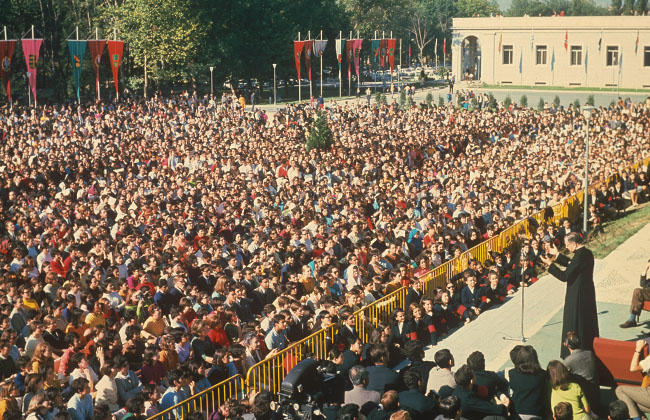
-
1969
Facultad de Teología
El Instituto de Teología,fundado mediante un Decreto el 23 de abril de 1967, por el Gran Canciller, se convierte en Facultad. Sus títulos académicos tienen plena validez canónica y civil.
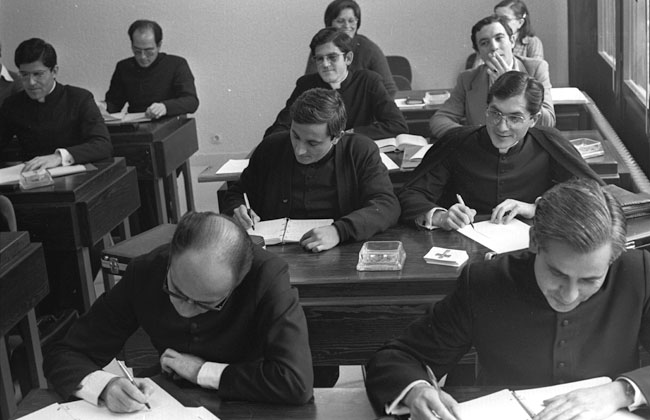
-
1971
Facultad de Ciencias de la Información
El Instituto de Periodismo es elevado a Facultad de Ciencias de la Información, tras el proceso, iniciado en 1969, para modificar la Ley General de Educación. Junto a la de Navarra, en el curso 1970/71, comienzan las Facultades en Madrid y Barcelona.
Ese mismo año, comienza la instalación del primer estudio de televisión para las prácticas de los alumnos. Se pone en marcha al año siguiente, 1972.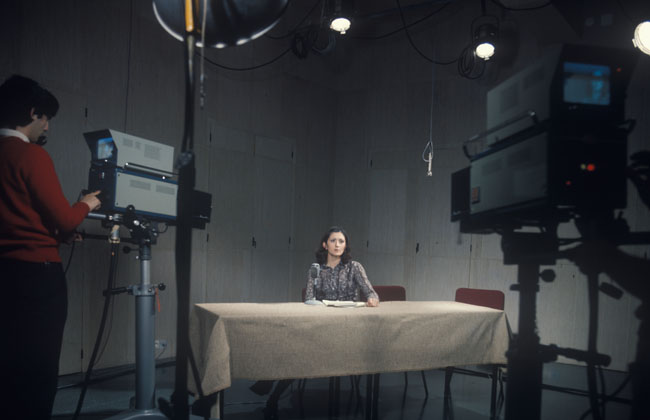
-
1972
El Gran Canciller visita la Universidad de Navarra
El 1972 El Gran Canciller visita la Universidad de Navarra para nombrar a Erich Letterer, Juan de Contreras y López de Ayala y a Paul Ourliac doctores honoris causa. Además, aprovechó su estancia en Pamplona para mantener importantes reuniones con miembros directivos de la Asociación de Amigos y con profesores de la universidad.
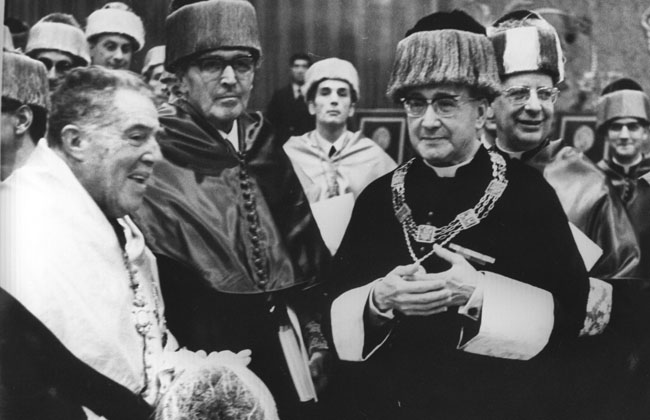
-
1974
El IESE en Madrid y última visita de San Josemaría
El IESE inaugura su campus en Madrid para hacer frente a la alta demanda de formación de ejecutivos en la capital de España.
Ese mismo año, el Club Atlético de la Universidad de Navarra (CAUN), único club universitario de España presente en la Liga de Atletismo, asciende a la Primera División. El CAUN había sido fundado en 1962 por el doctor Juan José González Iturri, de Rehabilitación y profesor de Medicina, con algunos alumnos de primero.
El Gran Canciller visitó la Universidad por última vez. Durante su visita, nombró al profesor Lejeune y a monseñor Hengbach doctores honoris causa y mantuvo una inolvidable tertulia con profesionales de la Universidad -profesores, enfermeras, médicos, personas de gestión y servicios,…- en el Colegio Mayor Belagua.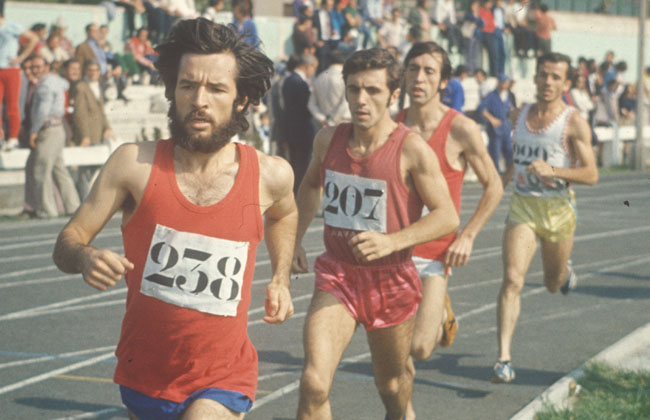
-
1975
Fallece el fundador de la Universidad
Monseñor Escrivá de Balaguer, fundador y primer Gran Canciller de la Universidad de Navarra, fallece en Roma el 26 de junio.
Mons. Álvaro del Portillo es nombrado Gran Canciller de la Universidad de Navarra.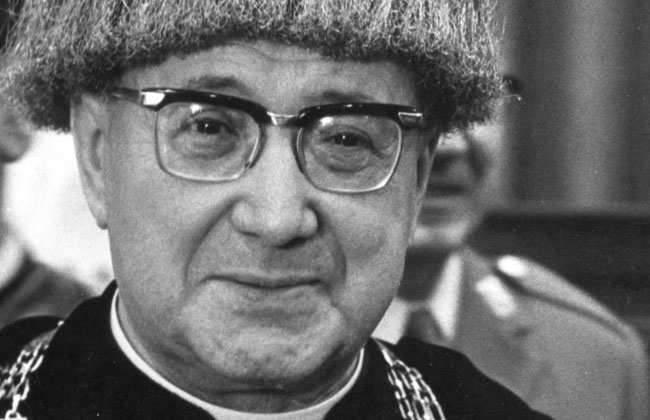
-
1976
Acto in memoriam de Mons. Escrivá de Balaguer
Monseñor Álvaro del Portillo, Gran Canciller de la Universidad de Navarra, presidió el 16 de junio un acto in memoriam de Mons. Escrivá de Balaguer, fundador y primer Gran Canciller de la Universidad. Sus palabras incluyeron la visión que mons. Escrivá de Balaguer tenía de la Universidad de Navarra.
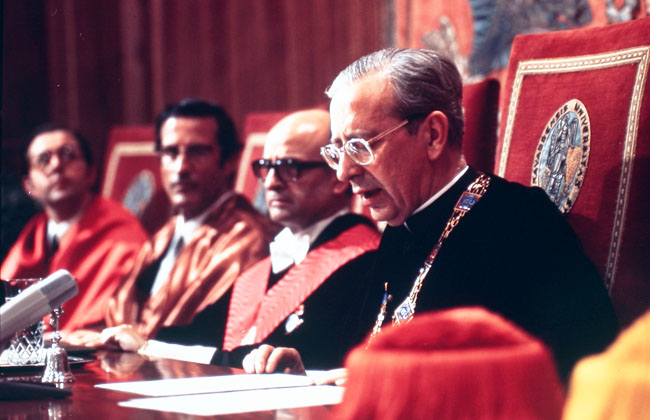
-
1979
Alfonso Nieto, nuevo rector
El profesor Alfonso Nieto toma posesión como rector el 25 de abril. Primer catedrático de Empresa Informativa en España, había sido director del Instituto de Periodismo entre 1969 y 1972, y decano de la ya Facultad de Ciencias de la Información entre 1972 y 1974. Fue vicerrector durante dos años (1977 a 1979), y rector hasta 1991.
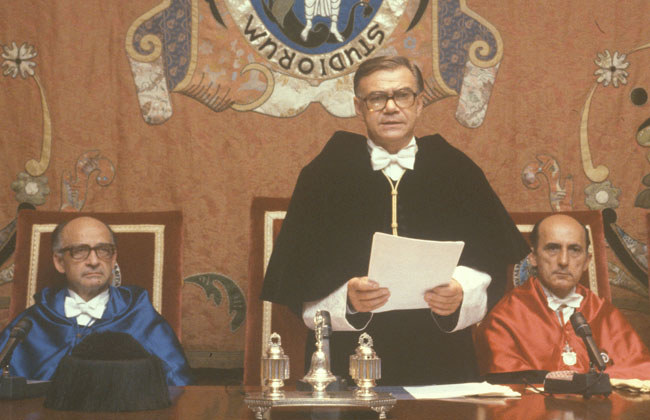
-
1981
25 Aniversario de Filosofía y Letras, y nacimiento del ICF
En octubre, comienzan los actos para celebrar el 25 aniversario de la creación de la Facultad de Filosofía y Letras, que cuenta ya con las Secciones de Historia (1957), Filosofía (1964), Filología Románica (1965); y Ciencias de la Educación y Geografía e Historia (1973).
Nace el Instituto de Ciencias para la Familia, con sede en el edificio Los Nogales. Desde entonces lleva a cabo una labor investigadora y docente, en torno al matrimonio y la familia.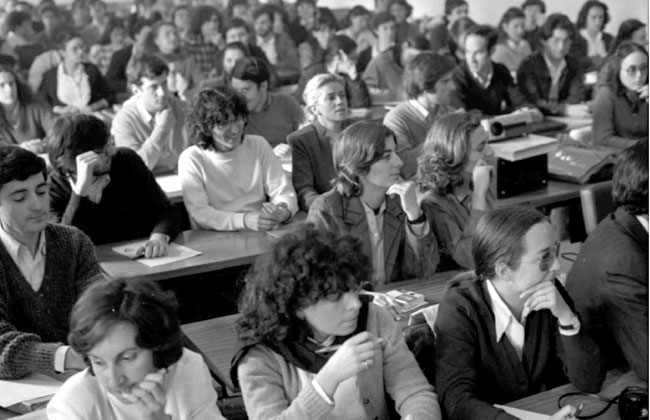
-
1982
Centro de Estudios e Investigaciones Técnicas de Guipúzcoa
Nace, en San Sebastián, el Centro de Estudios e Investigaciones Técnicas de Guipúzcoa (CEIT), con José Mª Bastero como director general y Manuel Fuentes, de director científico.
Se constituye como centro sin ánimo de lucro, jurídicamente independiente de la Universidad, pero vinculado a ella por un proyecto común.Pronto adquiere el carácter de centro tutelado del Gobierno Vasco y es declarado de utilidad pública.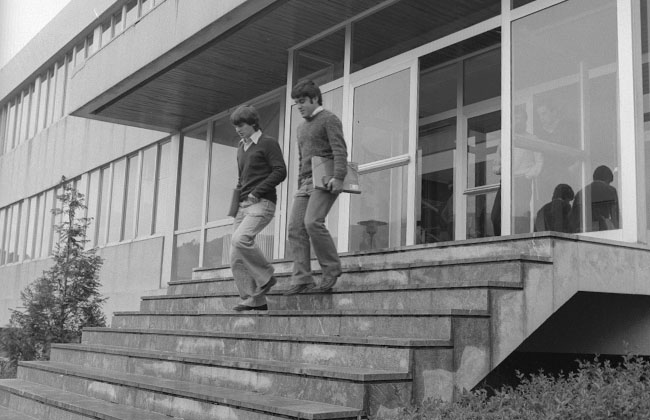
-
1984
Homenaje al Dr. Eduardo Ortiz de Landázuri
El 13 de octubre, la Universidad rinde homenaje al Dr. Ortiz de Landázuri por sus 25 años de magisterio y servicio. El acto estuvo presidido por Sus Altezas Reales los Duques de Soria, Margarita Borbón y su esposo, el Dr. Carlos Zurita. Se leyó un telex de los Reyes de España, que se unieron de corazón al acto.
Eduardo Ortiz de Landázuri, médico de prestigio en España en aquel momento, se había incorporado a la Facultad de Medicina y a la Clínica en 1958.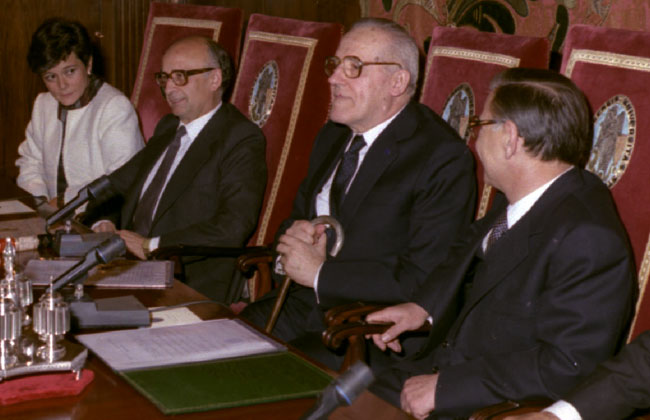
-
1986
Primeras Medallas de Plata de la Universidad
El 28 de enero, festividad de Santo Tomás de Aquino, la Universidad entrega por primera vez sus Medallas de Plata.Se otorgan 68. La Medalla marcada con el número uno se entrega a Ismael Sánchez Bella, pionero de la Universidad.
Esta distinción se concede cada año, en esa misma fecha, a todas aquellas personas que llevan 25 años o más al servicio de la Universidad.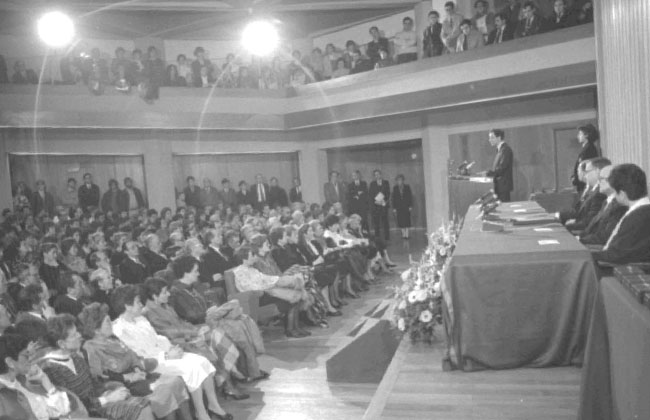
-
1987
Nace la Facultad de Ciencias Económicas y Empresariales
La Facultad de Ciencias Económicas y Empresariales se creó en 1987 con la ilusión de convertirse en un centro de referencia por su calidad. Con esta meta en el horizonte Miguel Alfonso Martínez-Echevarría recibió su nombramiento como primer decano de la Facultad.
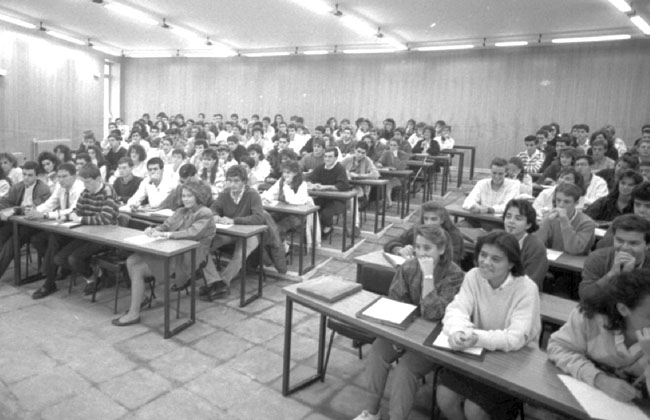
-
1988
Nace el CIFA
El 9 de septiembre se inaugura el Centro de Investigación en Farmacobiología Aplicada (CIFA), dirigido por el doctor Antonio Monge. Asisten casi doscientos directivos e investigadores de empresas farmacéuticas nacionales e internacionales, autoridades políticas y profesores.
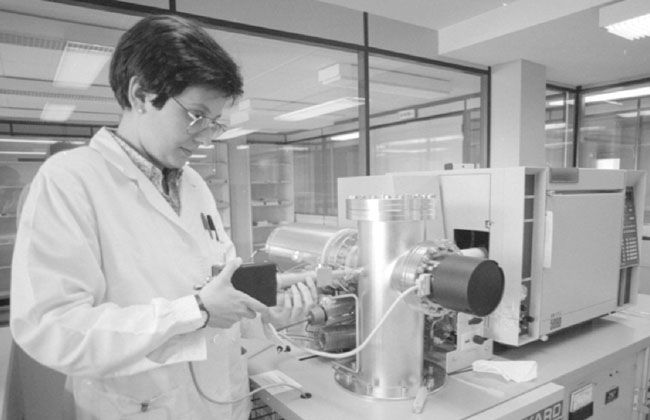
-
1990
Medallas de Oro y creación del Legado Ortiz-Echagüe
El 3 de octubre, se imponen por primera vez las Medallas de Oro de la Universidad a Ismael Sánchez Bella, Juan Jiménez Vargas y Alvaro d´Ors. Ya había recibido esta distinción el Dr. Ortiz de Landázuri, a título póstumo.
A iniciativa de un grupo de alumnos, nace Universitarios por la Ayuda Social (UAS).
Además, con el patrocinio de SEAT, el Legado Ortiz Echagüe se instala en un sótano del edificio Central, especialmente acondicionado.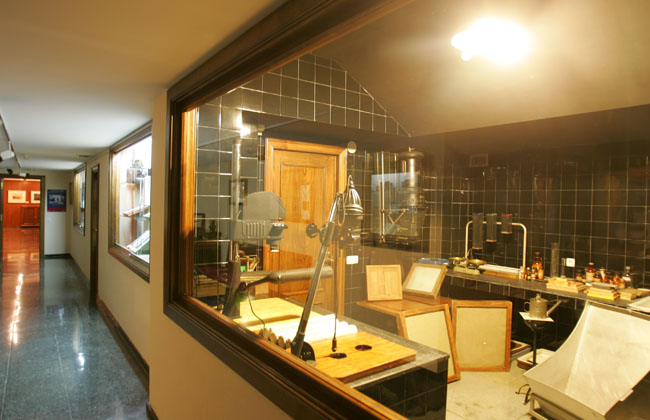
-
1991
Alejandro Llano, rector; y nuevas Medallas de Oro
El catedrático de Metafísica, Alejandro Llano, toma posesión como rector el 28 de junio. Llano se había incorporado al claustro de la Facultad de Filosofía y Letras en 1977, y entre 1981 y 1989 fue su decano.
Durante la apertura de curso 1991/92, se entregan las Medallas de Oro de la Universidad a la enfermera Carmen López, al profesor Amadeo de Fuenmayor y al catedrático Francisco Ponz, rector entre 1966 y 1979.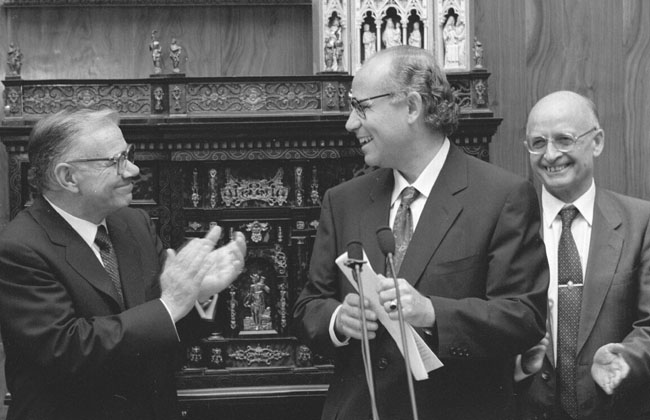
-
1993
Nace la Agrupación de Graduados de la Universidad
Se crea la Agrupación de Graduados de la Universidad de Navarra. Entre sus objetivos: mantener vivo el contacto con los antiguos alumnos y ofrecer a estudiantes y graduados oportunidades de formación, relación e información.
Quince años después, Alumni era la asociación de antiguos alumnos más numerosa de Europa, con más de 21.000 miembros.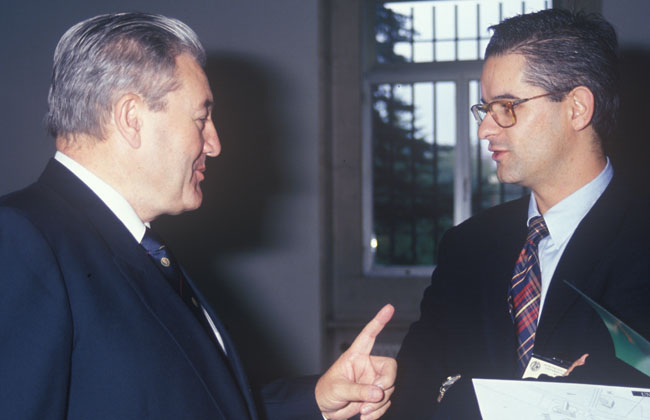
-
1994
Impulso a la investigación y reconocimiento a la Clínica
Se crea el programa PIUNA (Plan de Investigación de la Universidad de Navarra).
La Clínica es elegida por más de 6.000 médicos de toda España como la Institución Sanitaria de la Década.
El 14 de mayo, se celebra la primera edición del Día del Deporte.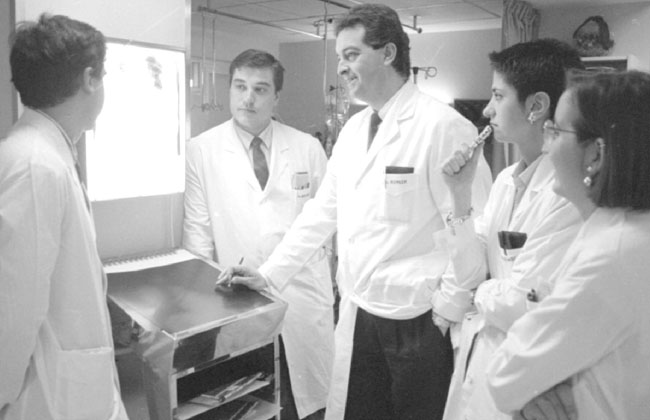
-
1996
José Mª Bastero, rector
El 22 de octubre, José Mª Bastero toma posesión como rector. Ingeniero naval e industrial, profesor de Mecánica, dirigió Tecnun (1978-1993) y el CEIT (1982-1993). En 1992 había sido nombrado vicerrector de Investigación.
El CIFA, primer centro universitario europeo que obtiene la certificación oficial de ‘Buenas prácticas de laboratorio'.
Se ponen en marcha el Centro de Estudios Europeos y el Centro de Documentación y Estudios Josemaría Escrivá de Balaguer.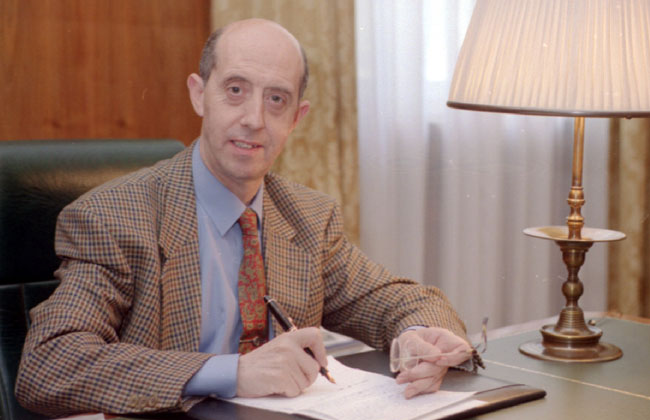
-
1997
Medalla de Oro de Navarra
El 3 de diciembre, Día de Navarra, el presidente del Gobierno Foral, Miguel Sanz, entrega la Medalla de Oro de Navarra a la Universidad. La recogió el rector José Mª Bastero.
Ese mismo año, se inaugura una nueva fase de la Clínica, obra de Leopoldo Gil Nebot; se firma el convenio con el que nacía el "Aula Aranzadi" de la Facultad de Derecho; y se instituye el Premio Brajnovic, concedido por la Facultad de Comunicación.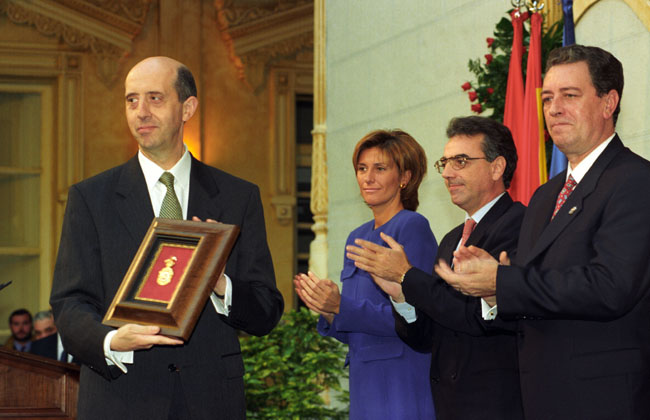
-
1998
Nuevos Doctores Honoris Causa
El 31 de enero se celebra una nueva ceremonia de Investidura de Doctores Honoris Causa: Joseph Ratzinger, Julian Simon, y Douwe Breimer.
La Universidad entrega su duodécima Medalla de Oro (en 1996 se le había otorgado a Jesús Vázquez a título póstumo), a la Asociación de Amigos.
Este año, nacen los Institutos de Antropología y Ética, y de Ciencias Religiosas.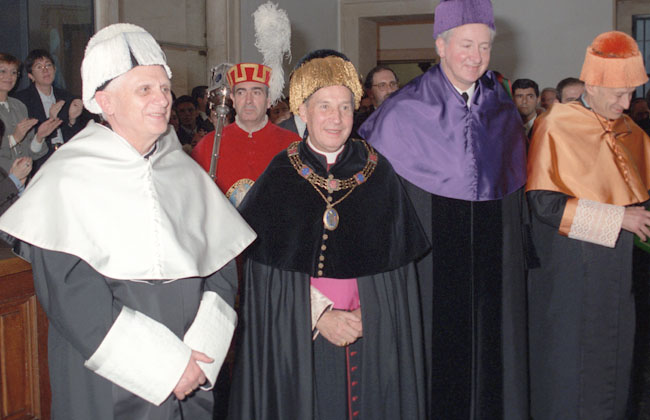
-
1999
Nace 98.3 Radio
Álvaro d'Ors, catedrático de Derecho Romano, recibe en el Monasterio de Leyre, de manos del príncipe Felipe de Borbón, el premio Príncipe de Viana, máximo galardón con el que Navarra distingue a los representantes de la cultura.
Se celebra la I Lección Conmemorativa Ortiz de Landázuri, que pronuncia Donnall Thomas, premio Nobel de Medicina en 1990.
El 14 de octubre, se inaugura 98.3 Radio, primera radio universitaria en España con 24 horas de programación propia, comercial.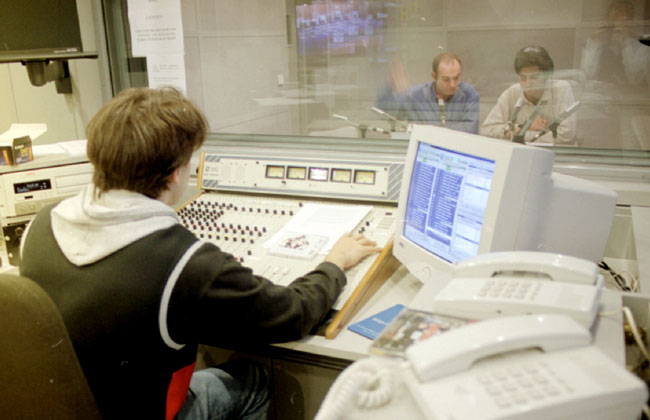
-
2000
Segunda profesora que recibe el Premio Príncipe de Viana
La profesora Concepción García Gaínza, primera catedrática española de Historia del Arte, recibe el premio Príncipe de Viana de la Cultura, como un año antes hiciera Álvaro d'Ors.
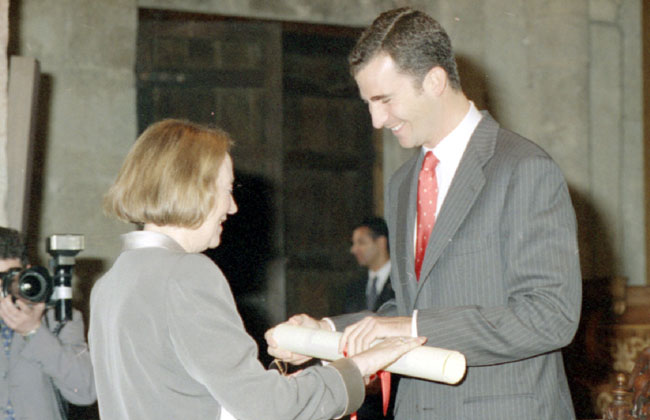
-
2002
Primera piedra del CIMA y canonización de san Josemaría
El rector, José Mª Bastero, entrega la Medalla de Oro de la Universidad, a título póstumo, a Antonio Valero, primer director general del IESE.
El 11 de abril, José Mª Aznar, presidente del Gobierno, coloca la primera piedra del Centro de Investigación Médica Aplicada (CIMA).
El 6 de octubre, el fundador y primer Gran Canciller de la Universidad, Josemaría Escrivá, es canonizado en Roma por el papa Juan Pablo II.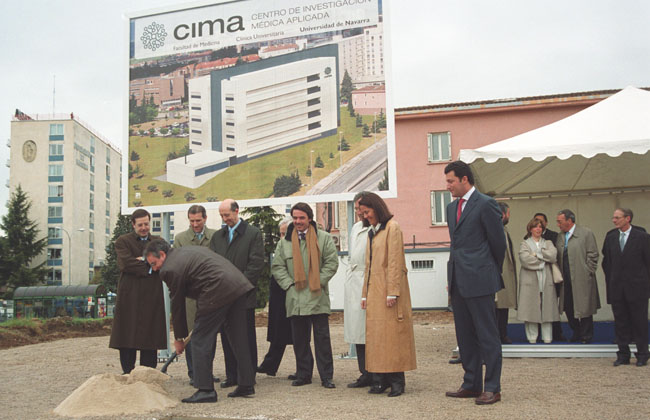
-
2005
Ángel J. Gómez-Montoro, nuevo rector
El catedrático de Derecho Constitucional, Ángel J. Gómez-Montoro, es nombrado rector de la Universidad.Era, desde 2003, vicerrector de Alumnos y Ordenación Académica.
Licenciado en Derecho por la Universidad Complutense de Madrid, diplomado en Derecho Constitucional y Ciencia Política por el Centro de Estudios Constitucionales y doctor en Derecho por la Autónoma de Madrid, se incorporó al claustro de la Universidad en octubre de 2001.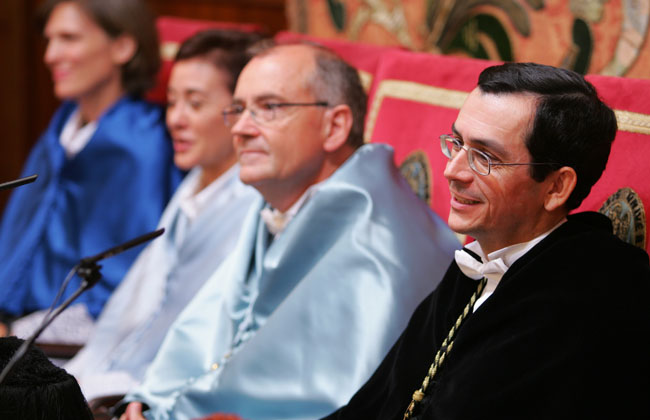
-
2006
Nuevo edificio en el campus de San Sebastián
Los príncipes de Asturias inauguran en marzo el centro de investigación y docencia en Telecomunicación y Microelectrónica en el Campus Tecnológico, ubicado en Miramón. Un centenar de ingenieros investiga allí en las áreas de bioingeniería aplicada a la medicina, radio digital y ADSL, entre otras.
En octubre, comienzan las actividades del Club de Emprendedores, promovido por FEUN y apoyado por Alumni, dirigido a estudiantes de todas las licenciaturas.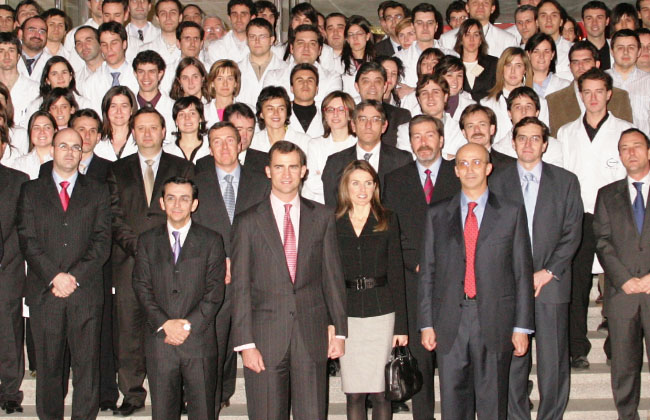
-
2007
Nuevo campus del IESE en Barcelona y avances en las patentes del CIMA
Los Reyes de España inauguran el nuevo campus del IESE en Barcelona, que cuenta con una superficie de 30.000 metros cuadrados.
Además, el Ministerio de Sanidad autoriza las pruebas en humanos de la primera de las 30 patentes del CIMA.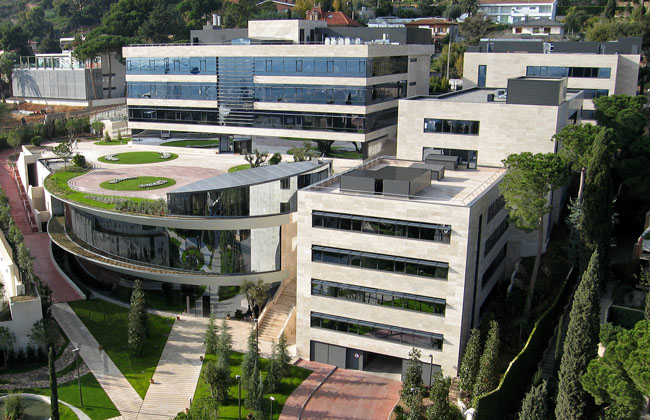
-
2008
Medalla de Oro a cuatro profesores y donación de María Josefa Huarte
La Facultad de Medicina adapta su plan de estudios al Espacio Europeo de Educación Superior (EEES).
María Josefa Huarte dona a la Universidad su colección privada de arte contemporáneo, con obras de Picasso, Rothko, Palazuelo, Oteiza y Chillida, entre otros.
Se entregan cuatro nuevas Medallas de Oro, a Mª Pilar Fernández Otero, Natalia López Moratalla, Carlos Cavallé y Lucas Mateo-Seco.
Se constituye el Instituto Cultura y Sociedad. Ese mismo año, se realiza una convocatoria de expresiones de interés de proyectos de investigación interdisciplinar en Humanidades y Ciencias Sociales donde se reciben 25 propuestas.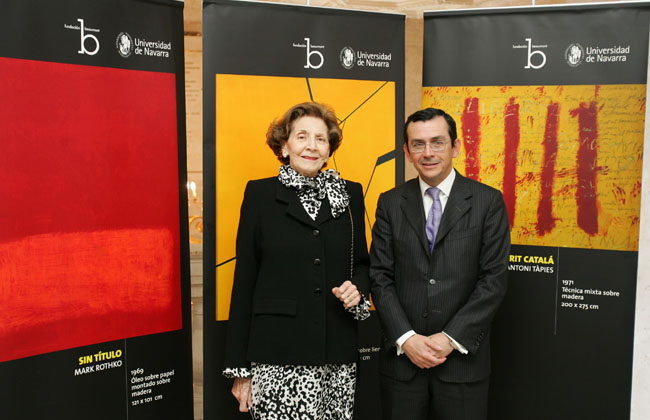
-
2009
Nuevos grados adaptados al EEES
La Universidad presenta 31 títulos de grado al Consejo de Universidades para obtener su verificación. Aprobada su adaptación al Espacio Europeo de Educación Superior, comenzarán a ofertarse en el curso 2009/10.Entre las titulaciones presentadas, destacan los nuevos títulos en Bioingeniería, Ingeniería en Diseño Industrial y Desarrollo de Productos, Ingeniería de la Edificación, los Magisterios en Educación Infantil y Primaria, y Bioquímica.
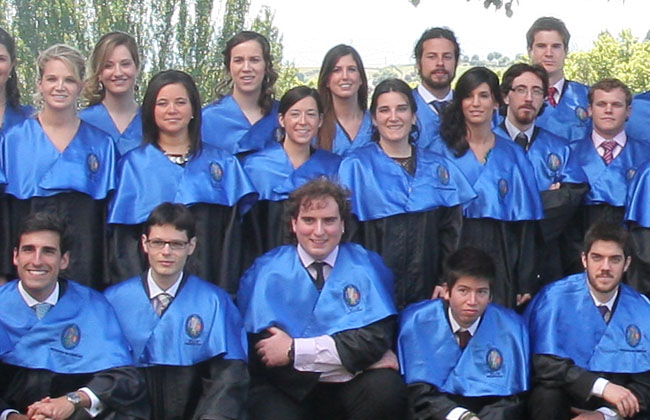
-
2010
50º aniversario de la Asociación de Amigos y nueva Medalla de Oro
La Asociación de Amigos celebra su 50º aniversario. La contribución de los Amigos supone una importante fuente de financiación de la tarea investigadora y docente de la Universidad.
En diciembre, María Teresa Igúzquiza, secretaría de los últimos cinco rectores, recibe la Medalla de Oro de la Universidad. Era la primera vez que dicha distinción se concedía a un miembro del personal de Administración y Servicios del centro.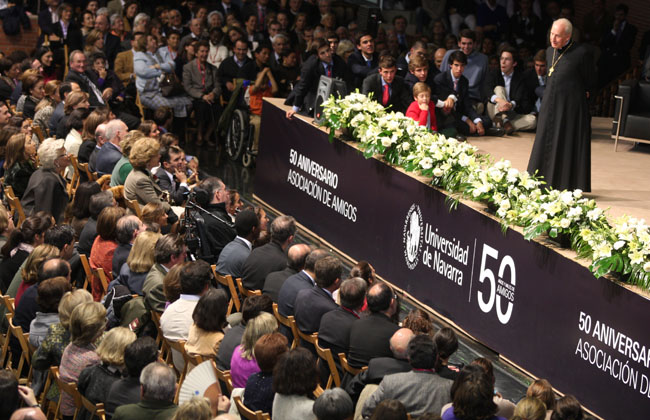
-
2011
Excelencia Internacional y nuevos Doctores Honoris Causa
La Universidad obtiene la calificación de Campus de Excelencia Internacional, del Ministerio de Educación.
La Escuela de Enfermería, que comenzó su andadura en 1954, se convierte en Facultad. El ISEM Fashion Business School, con sede en Madrid, se erige como centro de la Universidad.
El 27 de octubre, se concede el Doctorado Honoris Causa a Antonio López, Pèter Erdö, y Joseph Weiler.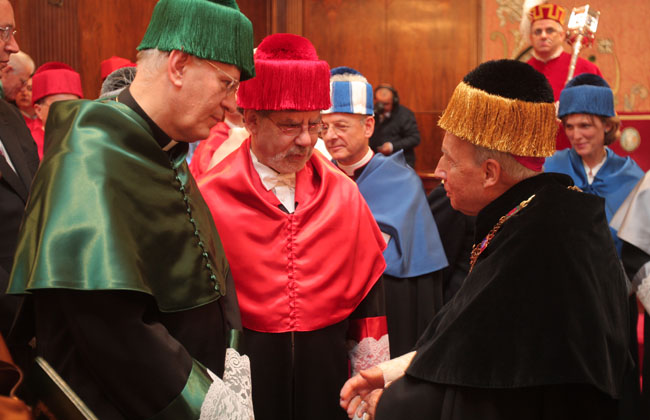
-
2012
Nuevo rector, medallas de oro e inauguración del edificio Amigos
Alfonso Sánchez-Tabernero, catedrático de Empresa Informativa, es nombrado rector. Es el primero que también es antiguo alumno.
En el acto de apertura de curso, se entrega la Medalla de Oro de la Universidad a José María Bastero, rector entre 1996 y 2005; y Francisco Errasti, director del CIMA.
Además, se inaugura el edificio Amigos, que alberga algunos servicios y las Facultades Derecho y Económicas.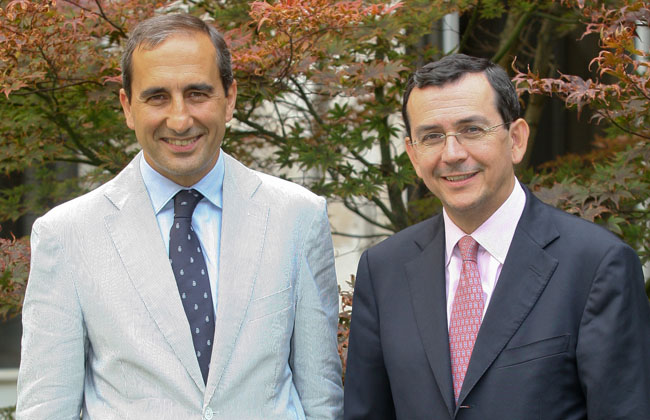
-
2013
Traslado de ISSA a Pamplona y nueva Facultad de Educación y Psicología
ISSA comienza a impartir en Pamplona el grado en Asistencia de Dirección-Management Assistance. La implantación de los cuatro cursos se completará de forma gradual. El traslado desde San Sebastián coincide con la celebración de su 50 aniversario.
Además, el crecimiento de la Facultad de Filosofía y Letras en los últimos años, lleva a la Universidad a la aprobación de una nueva Facultad de Educación y Psicología.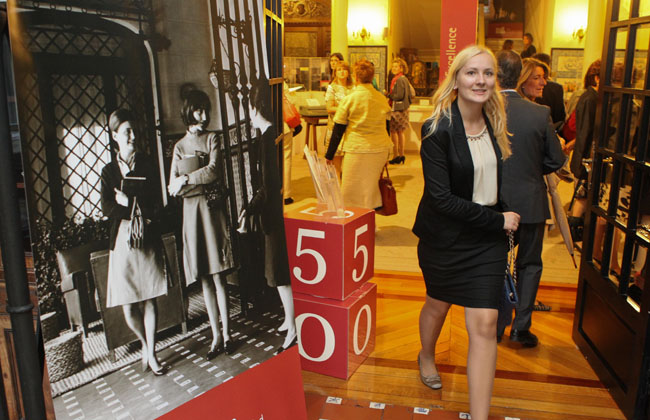
-
2014
Beatificación de D. Álvaro y nueva sede de la Clínica en Madrid
En septiembre, D. Álvaro del Portillo, segundo Gran Canciller de la Universidad, es beatificado.
La Clínica Universidad de Navarra inicia las obras de construcción de su nueva sede en Madrid. Está previsto que el nuevo centro hospitalario comience su actividad asistencial a finales de 2016. La Clínica ya contaba, desde 2004, con actividad asistencial en Madrid en una sede de carácter provisional.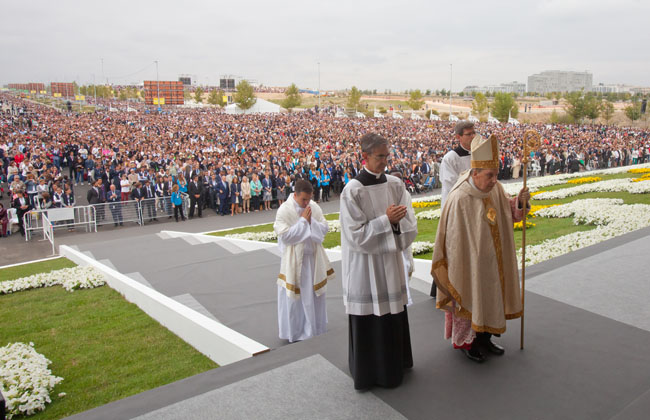
-
2015
Inauguración del Museo Universidad de Navarra
Los Reyes, don Felipe y doña Letizia, presiden la inauguración del Museo Universidad de Navarra, obra del arquitecto Rafael Moneo, en su primer viaje oficial a Navarra como monarcas. El Museo inicia su programación con cinco exposiciones, la actuación de la Compañía Nacional de Danza en el Teatro y una amplia oferta formativa.
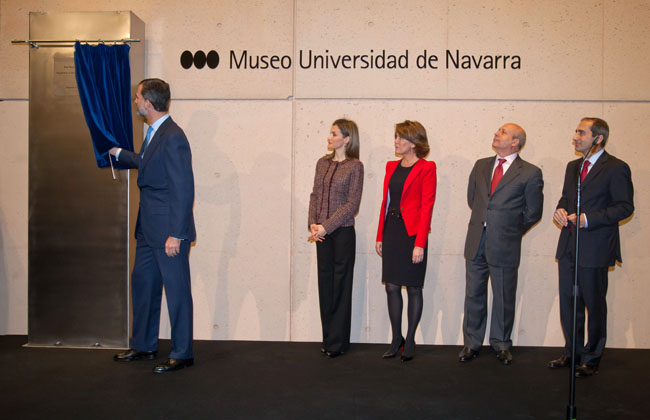
-
2016
Fallece el Gran Canciller, Monseñor Javier Echeverría
El Gran Canciller de la Universidad, Monseñor Javier Echevarría, falleció el 12 de diciembre de 2016 en Roma a los 84 años. Tras el fallecimiento del Beato Don Álvaro del Portillo fue elegido y nombrado por Juan Pablo II prelado del Opus Dei, el 20 de abril de 1994. Desde entonces fue Gran Canciller de la Universidad. Durante estos 22 años, visitó con frecuencia Pamplona, interesándose por los avances de las facultades, de los centros de investigación, del Museo...
-
2018
Inauguración del campus de Madrid
El rector, Alfonso Sánchez-Tabernero, preside la inauguración oficial del nuevo edificio de posgrado, que completa así el proyecto de campus que la Universidad puso en marcha en noviembre de 2017 con la apertura de la Clínica Universidad de Navarra.
Además, la Universidad fue galardonada con el premio internacional 'Green Flag Award', un reconocimiento a la gestión integral de sus zonas verdes. El premio situó al campus como uno de los mejores parques del mundo por el nivel de excelencia en su gestión.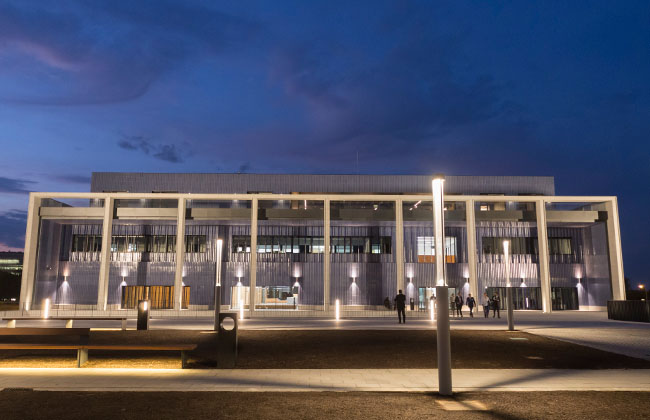
-
2019
Nuevos Doctores Honoris Causa
La Universidad concedió el doctorado honoris causa al arquitecto navarro Rafael Moneo, a la socióloga inglesa Margaret S. Archer, a la filóloga hebrea Ruth Fine y al experto en economía y gestión de medios de comunicación Robert Picard. El acto estuvo presidido por el gran canciller, Fernando Ocáriz, y se celebró en el Teatro del Museo, con la asistencia de alrededor de 700 personas.
Ese mismo año, el "THE Europe Teaching Rankings 2019" situó a la Universidad como tercera de Europa en docencia, detrás de Oxford y Cambridge.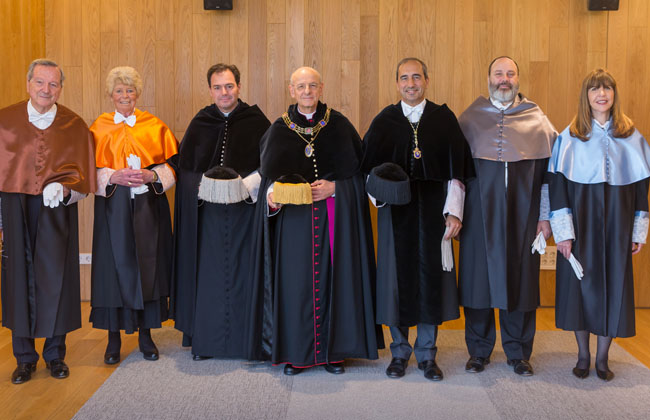
-
2020
COVID-19
Tras la declaración del estado de alarma por parte del Gobierno de España, la Universidad cerró sus campus de Pamplona, San Sebastián, Madrid y Barcelona, trasladando toda su actividad presencial al entorno digital.
Para una vuelta segura a los campus, con motivo del inicio del nuevo curso 20/21, la Universidad puso en marcha el plan Prepara2 que incluyó medidas de prevención e higiene, una docencia innovadora y un incremento en el programa de ayudas para estudiantes de grado y máster.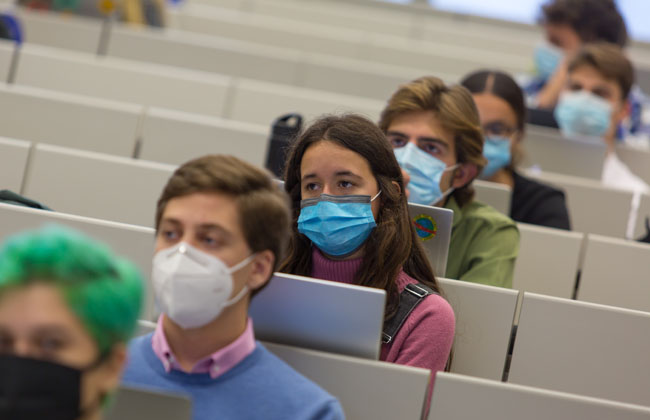
-
2021
María Iraburu, nueva rectora
El gran canciller, monseñor Fernando Ocáriz nombró a la profesora María Iraburu Elizalde nueva rectora de la Universidad. La profesora Iraburu es la novena persona en ocupar este cargo.
María Iraburu (Pamplona, 1964), bióloga por la Universidad de Navarra, defendió su tesis doctoral en el departamento de Bioquímica y Biología Molecular en 1992 y entre los años 1993 y 1996 realizó una estancia post-doctoral en el Albert Einstein College of Medicine de Nueva York. En 1996 se incorporó a la Universidad. Desde entonces, ha compatibilizado su carrera investigadora con la docencia y el gobierno universitario.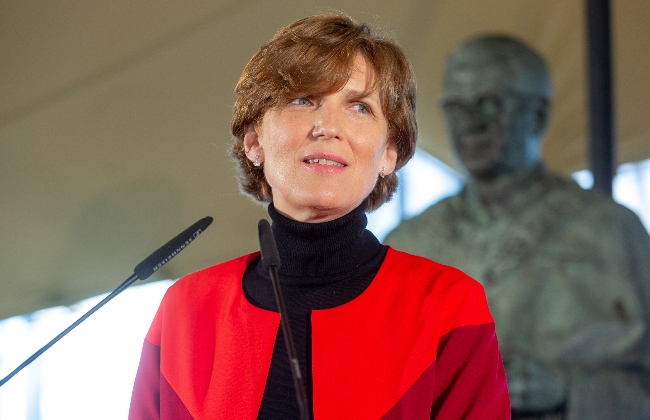
-
2022
La Escuela de Ingeniería cumple 60 años
La Escuela de Ingeniería. Tecnun, celebró sus 60 años con la presencia de profesores, antiguos alumnos, empresarios, investigadores y representantes de las instituciones.
